We select the type of installation
Wall-mounted or wall-hung washbasin for a bathroom - the simplest option, it can be purchased separately and mounted in the right place. But the wall on which such a washstand is installed must be solid or well reinforced.
A steel frame will help out, it is necessary when installing heavy sinks. And it's not just their weight - people often lean on the sink when brushing their teeth, or instinctively grab onto it to maintain balance if they slip in the bathroom.
pros pendant models:
- it is not necessary to buy a sink complete with a furniture set;
- it is easy to install, thanks to the included bracket or console;
- easy to clean the floors underneath.
Minuses:
- the stability of the wall must correspond to the weight of the product;
- have to hide plumbing communications inside a wall, which is not always possible, or in a box;
- the free space under the sink is not used (but this is a conditional drawback, there are shallow rectangular models under which it is easy to install a washing machine or laundry basket).
Fight for maximum ergonomics in the bathroom allow wall cabinets with a built-in washbasin, but you have a good idea of how much they can weigh and what requirements are imposed on the supporting wall in this regard.
Overhead sinks are mounted on the table top and rise above its surface. This circumstance in itself protects furniture from the destructive action of moisture, and if the installation is done carefully, there are no gaps, then wood, MDF or other hygroscopic material will be safe.
Despite the fact that bathroom furniture always has a moisture and heat protective coating, it will last much longer in a room with a high-quality ventilation system.
pros overhead models:
- the main load falls on the curbstone, therefore there are no significant requirements for the strength of the wall;
- free space in the bathroom is used to the maximum - you can place the necessary little things on the countertop (soap dish, glass with toothbrushes, cosmetics), and store larger things in the lower compartments (household chemicals, laundry and cleaning equipment);
- all communications are hidden, there is no need to cut a wall or construct a protective box.
Minuses:
- an overhead sink should be combined with furniture, both in size and in style, therefore it is purchased as a set and is not cheap;
- keeping the bathroom floor clean is difficult, especially if the cabinet has short or none at all.
Built-in or recessed sinks they are mounted in three ways: flush with the surface of the countertop, under it in a specially cut hole or on it (they are supported with bumpers around the perimeter). In all these cases, you need an exact match of dimensions, down to the millimeter.
The first two types of mortise sinks are very easy to use - there is a maximum of free space on the countertop for placing hygiene products, and it is easy to brush away splashes directly into the bowl. But bathroom furniture should be made of a material that is more reliably protected from moisture than wood or MDF.
The advantages and disadvantages of built-in and overhead washstands are generally the same, although the former require an even more scrupulous approach to installation.
Semi-recessed or semi-recessed washbasin for the bathroom - a functional hybrid of the two named types. The front half of the bowl protrudes beyond the edge of the countertop, so it is very convenient to wash - you can lean on the sides, and your knees do not rest against the front of the curbstone.
Pedestal sink everyone knows as a "tulip" - this is a monolithic or two-piece structure, where the bowl is simultaneously mounted to the wall and rests on a leg, inside which hides the siphon and the lower parts of the mixer. Such washstands do not necessarily look like flowers and are appropriate not only in classic bathroom interiors... Nowadays “tulips” of various shapes and styles are produced.
pros sinks on the pedestal:
- the main load falls on the leg, therefore, there are no special requirements for the strength of the supporting wall;
- you can purchase a sink separately from the furniture set and very inexpensively;
- installation is straightforward;
- communications are easily masked.
Minuses:
- the free space under the sink is wasted;
- dirt accumulates around the leg, it is inconvenient to clean up.
For those who like the very principle of "tulips", but would like to facilitate the maintenance of the bathroom floor, we can recommend models with a semi-pedestal. But you need to understand that in fact these are wall-mounted washbasins, installed only on a fairly reliable wall. You will only win in aesthetics - you hide unsightly pipes.
Floor sinks represent a tall monolithic bowl that can be installed anywhere, even in the middle of the bathroom. Such design delights require a lot of money and free space, which is probably why they did not take root in our realities.
The rationality of this solution is also questionable - communications are easy to hide, but they need to be brought to the installation site of the sink. And you won't be able to store anything under it.
Determining the material
Faience - the most common and affordable material. It is based on kaolin, a white clay that is fired and covered with a protective glaze. The higher the quality of this coating, the longer the ceramic sink will last, because the faience is porous. Low-cost models from Chinese manufacturers are quickly covered with a cobweb of cracks.
The faience washstand is easy to care for, it can be of any color, the streams of water in it do not make noise when hitting the surface. There are only two downsides: great weight and fragility. For example, expanding a hole for a mixer or drilling an additional one will not work.
Porcelain also beats and weighs a lot, but it lasts longer due to the addition of quartz or feldspar to the composition and prolonged firing. The hygroscopicity of this type of ceramics is much lower, only 2% versus 10-12% for earthenware models, and the smooth surface is not covered with cracks.
A wide range of colors and ease of care remain on the list of advantages, but an extra-budgetary cost is excluded from there - porcelain sinks are much more expensive than faience ones.
Metal, or rather stainless steel with the addition of nickel or chromium, is also often found in our homes.Steel washbasins are strong and durable, weigh a little and look impressive, but only as long as they are new and clean.
Every dried drop of water is visible on the metal surface, you need to take care of the sink carefully, avoiding abrasives, and all the same, over time, such plumbing becomes covered with microscratches and fades. And it is also very noisy - the water rushes into the bowl with a crash.
Strained glass from 15 mm thick - a fashionable material for the manufacture of sinks in the bathroom. But if the bowl is transparent, it will have to be washed literally every day. Mineral stains are also clearly visible on matte and colored glass washbasins.
The main advantages of tempered glass are durability, moderate weight and spectacular appearance, while the disadvantages are high price and sensitivity to abrasive cleaning agents.
Composite or artificial stone outwardly, as a rule, it hardly differs from natural material. Such sinks for the bathroom are made of marble or granite chips with the addition of acrylic resins.
Washbasins from artificial stone They are relatively inexpensive, look great and do not require constant wiping, especially if the colors are variegated. But they are heavy and afraid of household chemicals containing acids and alkalis.
A natural stone, usually it is granite, marble or onyx - an exclusive material for the sink or bath, each item will become the only one due to the unusual pattern. Although the stone has great weight and sensitivity to aggressive detergents, it is extremely easy to use and retains its original beauty for years.
A natural stone washbasin will last longer than a composite washbasin. In the event of chips or cracks, it can be repaired. The disadvantage of all this luxury and comfort is obvious - the "biting" price.
Concrete - an unexpected option, but many will like it, especially fans of industrial design trends (loft, hi-tech). Micro concrete washbasins are strong and durable, but they can crack on impact or sudden temperature changes. They weigh a lot, are expensive, and most importantly, they darken from water every time they get wet.
Wood also used to make bathroom sinks. It is very carefully processed: stained, dehydrated, covered with several layers of varnish and protective polymers. And even with all these tricks, stylish wooden washbasins, which are more expensive than marble ones, need to be repaired every 3-5 years.
What is the best form to use?
Washbasins with square or rectangular bowl - classics of the genre, they best resist splashes.
Semicircular and oval models with sufficient depth will also not contribute to clutter in the bathroom.
Now a tempting choice opens before the buyer shell shapes:
- hemispheres;
- cubes without an upper edge;
- lotuses and daisies;
- snails and shells;
- halved ellipses, eggs and beans;
- asymmetrical whimsical options that are difficult to characterize.
You need to focus on combination of attractive design with ease of use... There are even slab-like sinks with a small depression in the center. They look original, but washing your hands there without splashing clothes and furniture is problematic.
What do you need to know about dimensions?
Width depends on the model and the availability of free space and varies from 40 to 70 cm. There are also very wide shells, up to 1 m or more, but in practice they are not necessary.
The distance from the front side to the rear should be 40-55 cm, otherwise it will be inconvenient to use such a washstand, especially if the person is short.
Depth within 30-60 cm is considered normal, more can be recommended for household sinks, and less deep models will be uncomfortable due to splashes.
Installation height washstands are standard, it is regulated by SNiP 3.05.01-85 and is 80 cm for an adult, 70 cm for a student and 50 cm for a kindergarten student.
What additional parameters need to be considered?
It is necessary to consider features of operation:
- for a large family, sinks in the bathroom with double bowls will be relevant, where, for example, a mother and a child can make a morning toilet at the same time;
- if the house contains a pet, it should be convenient to wash its paws after a walk or bathe the animal in the washbasin;
- having a baby implies the ability to comfortably and safely wash it away when changing diapers and soak baby clothes in the sink for a quick wash.
In a cramped bathroom you need to squeeze the benefit out of every centimeter of the area, so it is reasonable to choose sinks with cabinets for storing things, place a washing machine under them or a laundry basket.
Another good solution for small bathrooms - corner washstand.
Corner sinks not necessarily mounted, floor models with pedestals are available for the rational use of free space.
It is better to choose a sink for the bathroom even at the stage of renovation or when buying a furniture set - this is a guarantee that the plumbing will harmoniously fit into the interior.

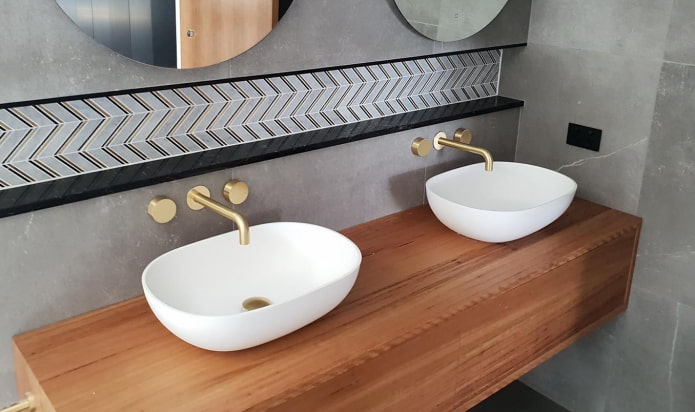
 10 practical tips for arranging a small kitchen in the country
10 practical tips for arranging a small kitchen in the country
 12 simple ideas for a small garden that will make it visually spacious
12 simple ideas for a small garden that will make it visually spacious
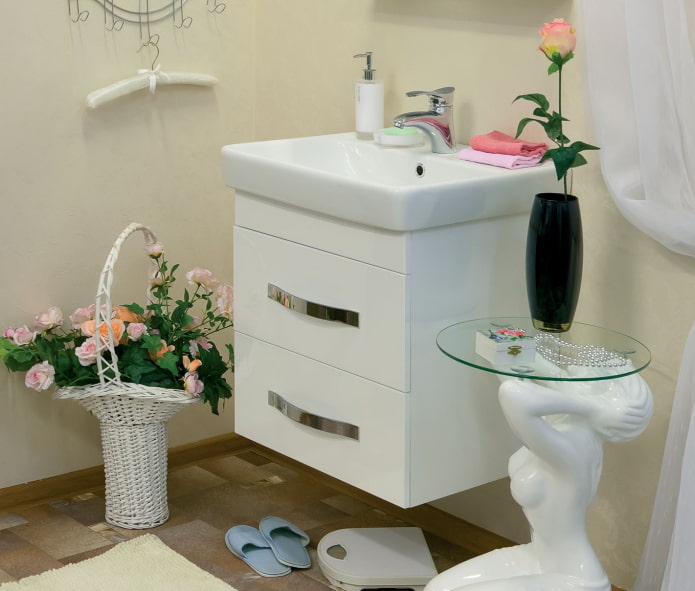
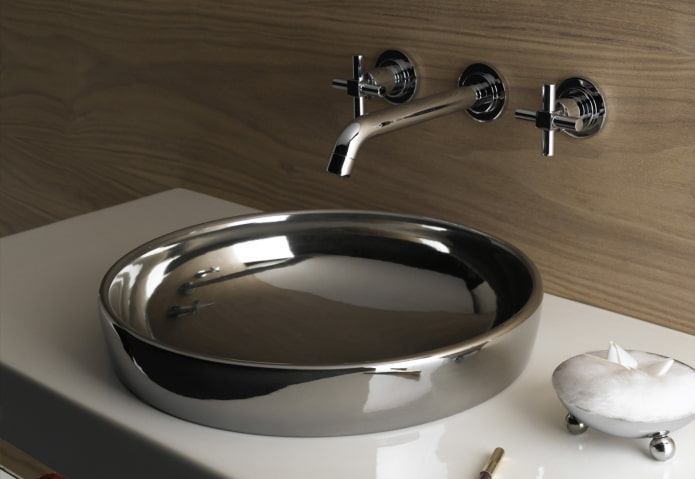

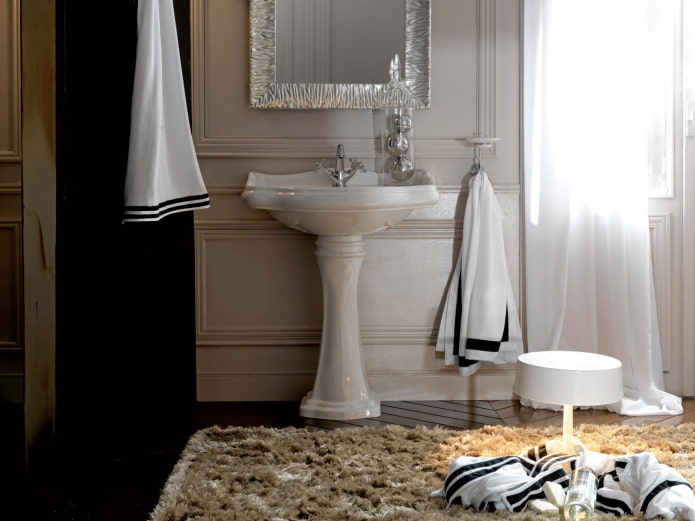
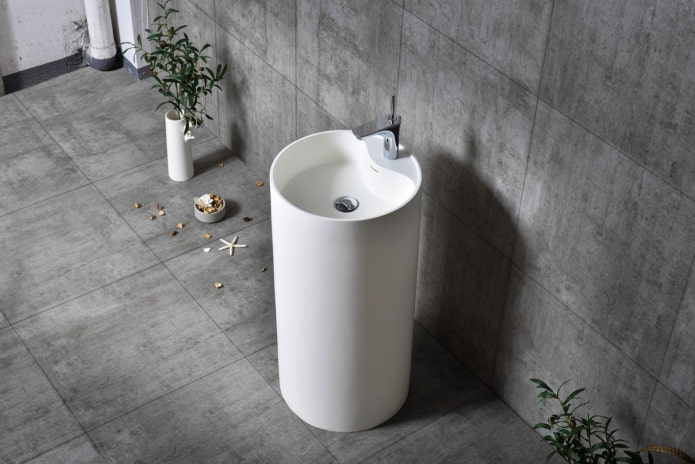
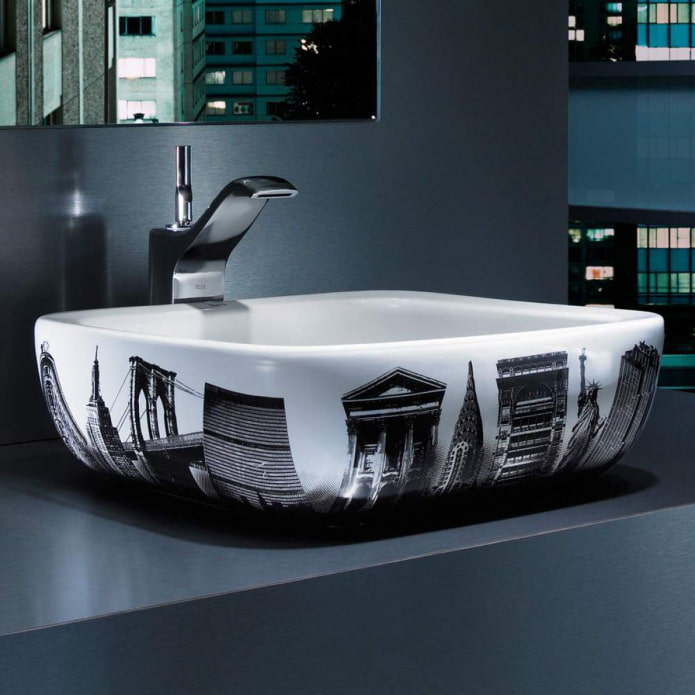
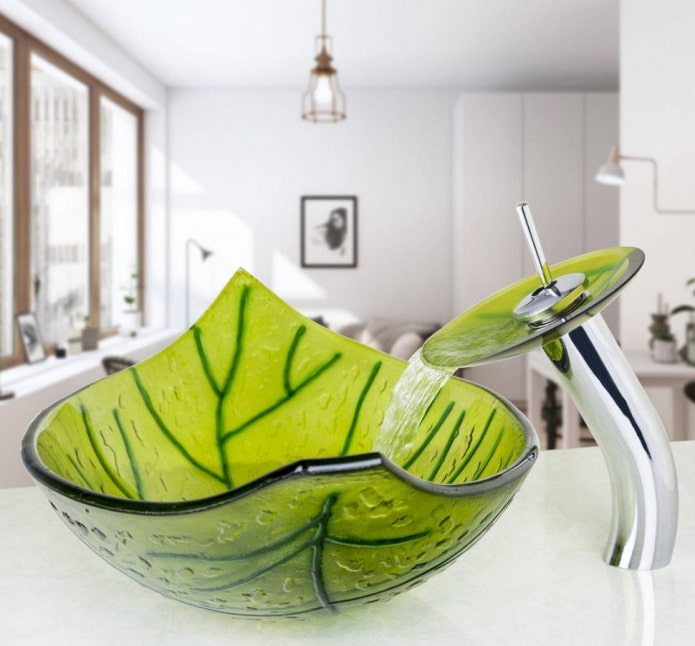
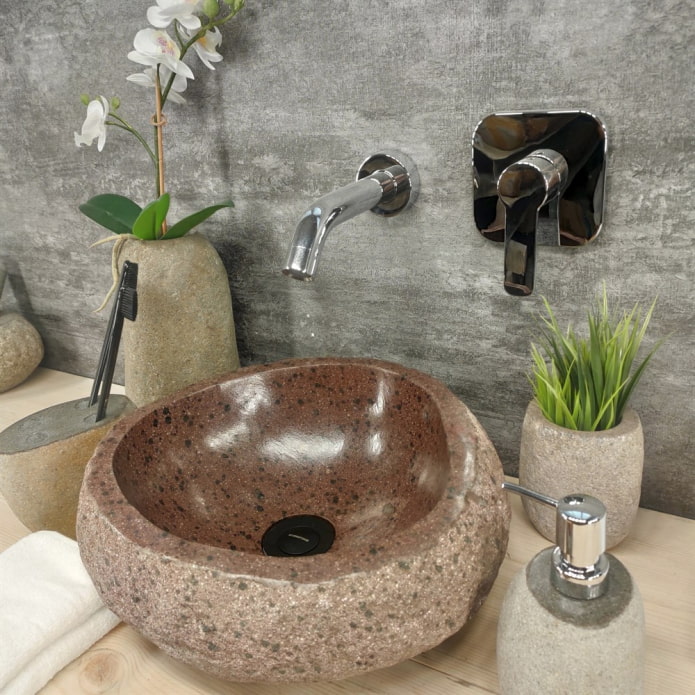
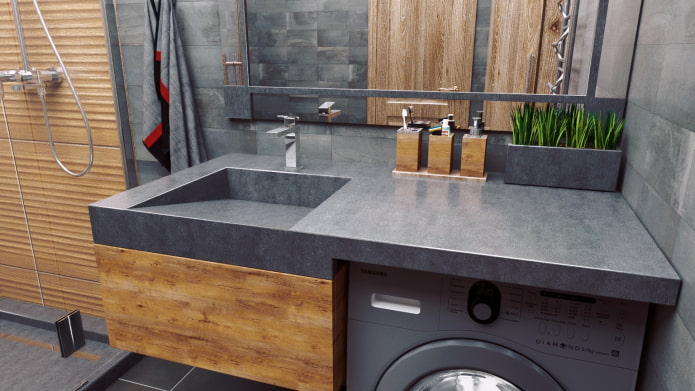
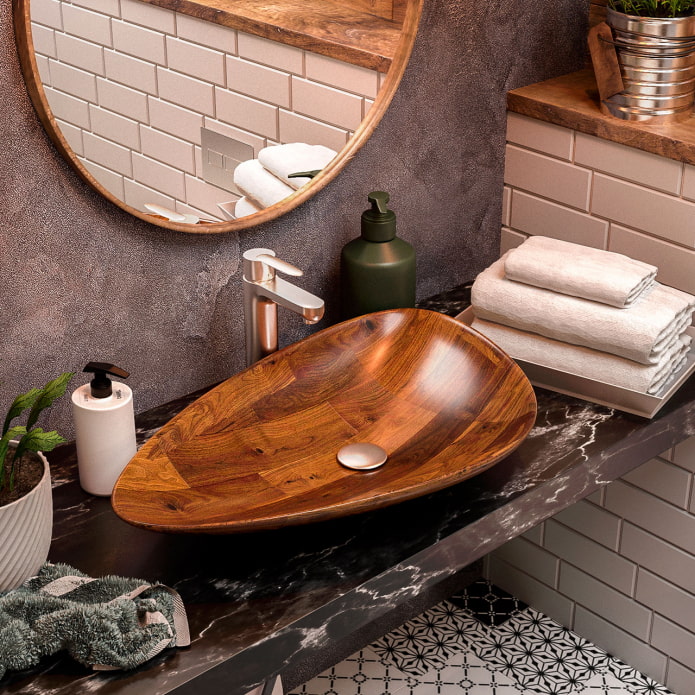


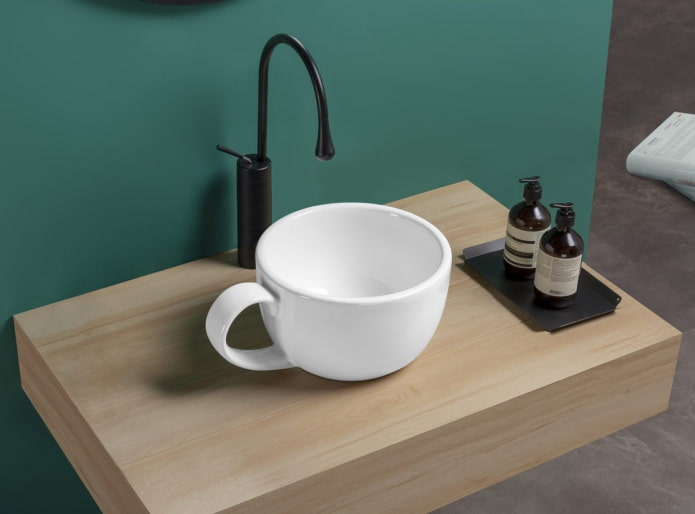
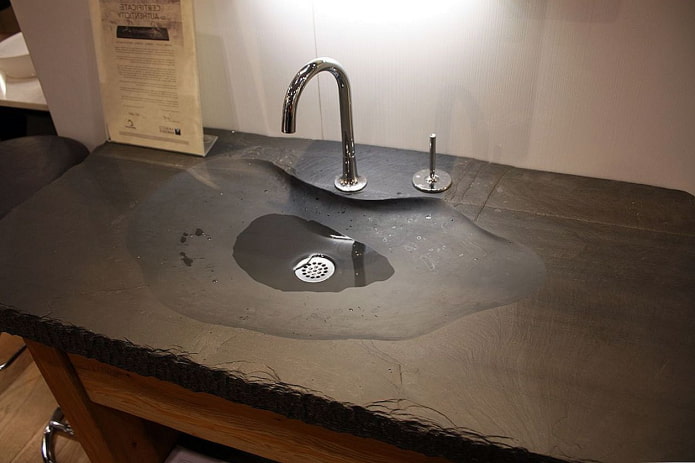
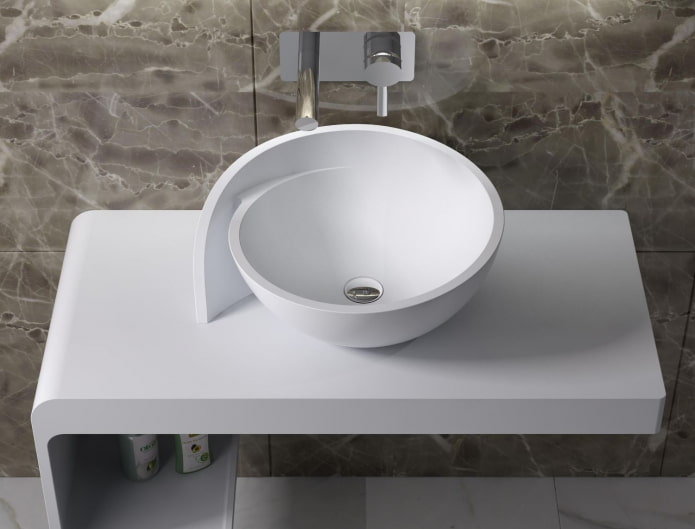

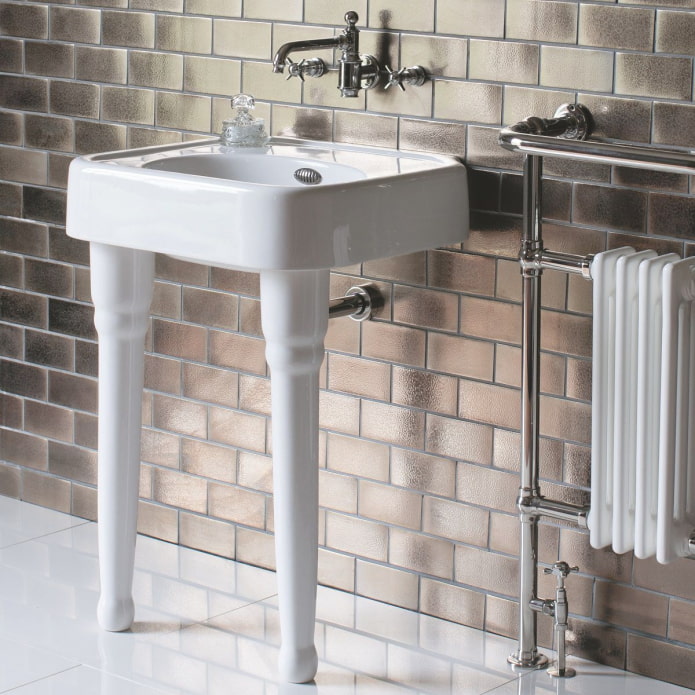
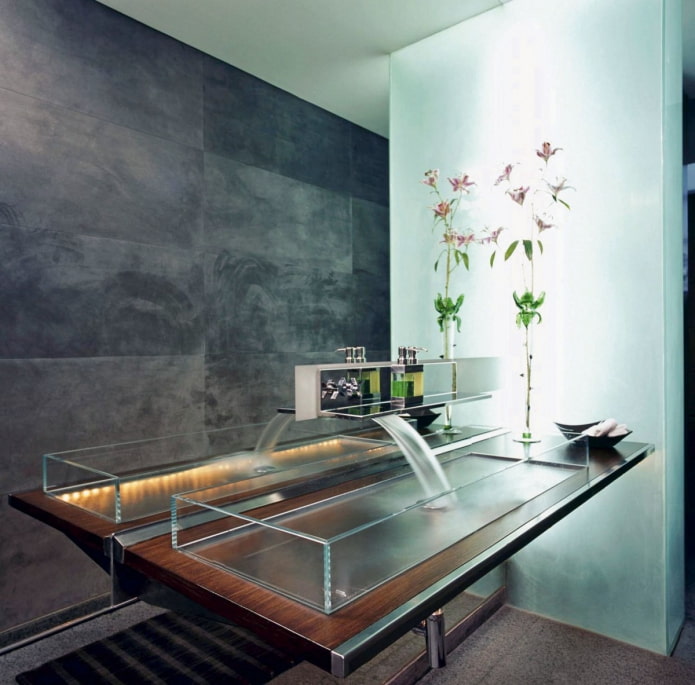
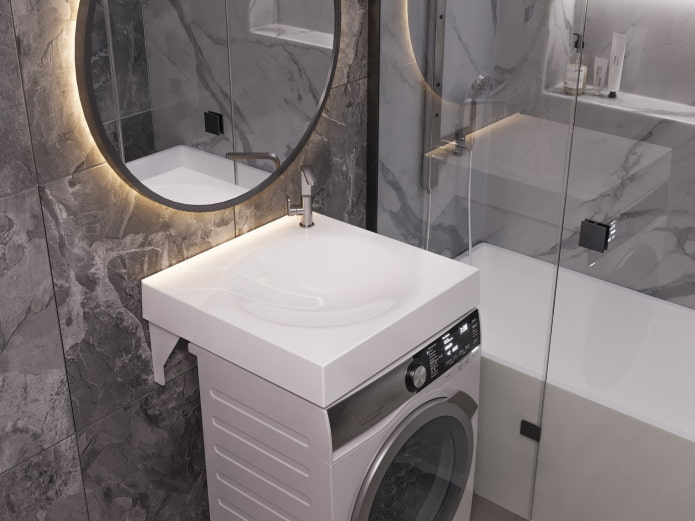
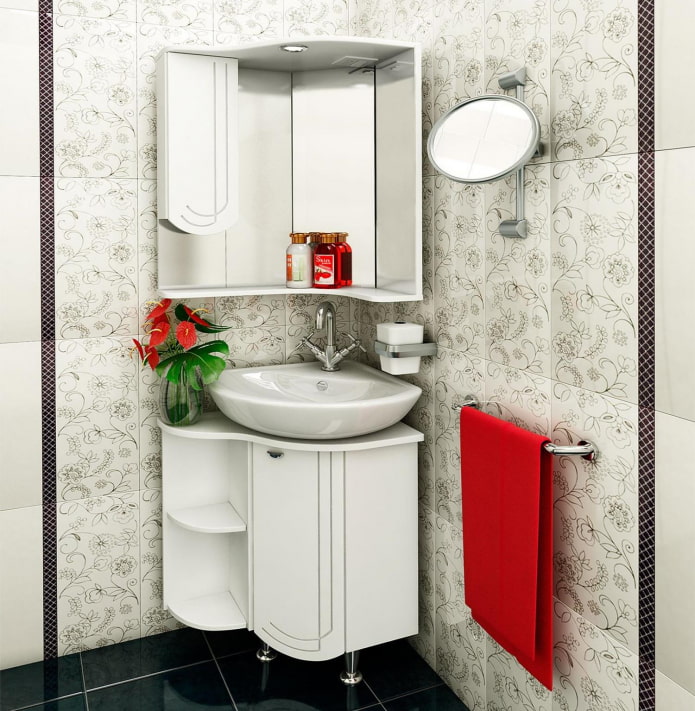

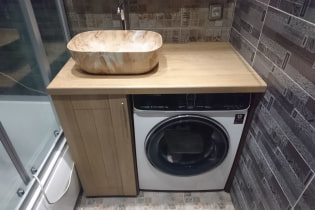 How to position a washing machine in a small bathroom?
How to position a washing machine in a small bathroom?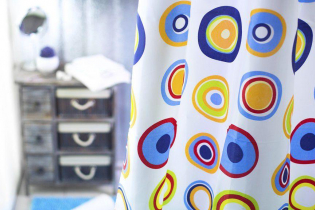 How to remove plaque from the bathroom curtain?
How to remove plaque from the bathroom curtain?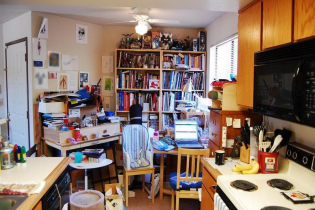 7 common mistakes in small apartment renovation that eat up all the space
7 common mistakes in small apartment renovation that eat up all the space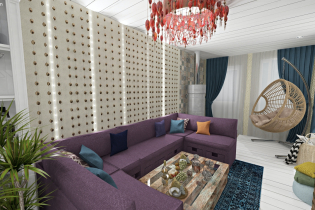 Apartment layout: how not to be mistaken?
Apartment layout: how not to be mistaken?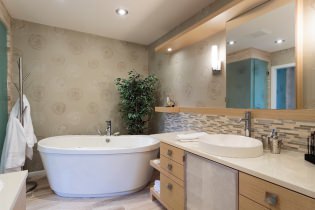 Wallpaper for the bathroom: pros and cons, types, design, 70 photos in the interior
Wallpaper for the bathroom: pros and cons, types, design, 70 photos in the interior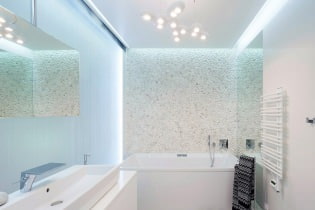 Modern bathroom interior: 60 best photos and design ideas
Modern bathroom interior: 60 best photos and design ideas